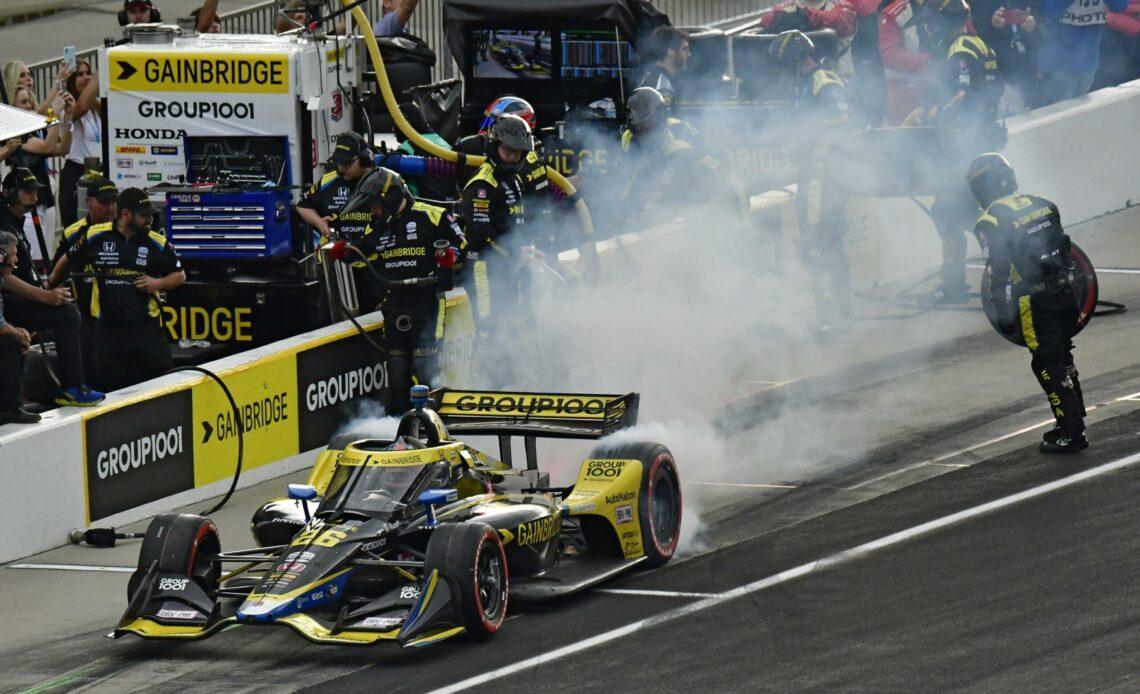Colton Herta’s save on a still partially damp road course at the Indianapolis Motor Speedway seemed to defy the laws of physics in Saturday’s (May 14) GMR Grand Prix, the fifth race for the 2022 NTT IndyCar Series season.
Going through turn 8 on the fourth lap of the race, Herta was right behind Pato O’Ward who had just pitted from the race lead for dry weather tires as the track was drying from an early afternoon rain shower. However, Herta made his pit stop for slick tires one lap sooner and had generated enough heat in his tires to become the fastest car on the track.
The No. 26 Andretti Autosport Honda pushed hard to pass O’Ward for what would be the effective lead of the race. Going through turn 8, Herta had a slide straight out of The Fast and Furious: Tokyo Drift.
UNBELIEVABLE!
WHAT A SAVE by @ColtonHerta! #INDYCAR
📺 : @NBC and @PeacockTV pic.twitter.com/aGJjEqaV3T
— IndyCar on NBC (@IndyCaronNBC) May 14, 2022
The pass was for 13th spot at moment, but once everyone else made their stops on that lap then Herta would be up front, eventually leading 50 of the race’s 75 laps en route to a victory.
Herta started the race in 14th place, was nearly 9.5 seconds behind early leader O’Ward before pitting and was leading by the fifth lap.
How did that happen? Let’s take a closer look.
INDYCAR has 12 different scoring loops around the 14-turn, 2.439 mile road course. The distance between loops varies around the circuit, the shortest being .108 miles and the longest .3412 miles.
Herta’s micro sector data from before and after the pit stop for slick tires is the focus. Herta’s pit stop at the end of the race’s second lap means that there are five micro sectors with no data from the pit entry lane to the blend line at turn 1, so the overlapping sectors will get the attention.
In the shortest micro sector made up of turn 3 and half of the straight bits of track before and after that corner, Herta was already .2172 seconds faster immediately…
Click Here to Read the Full Original Article at Frontstretch…

